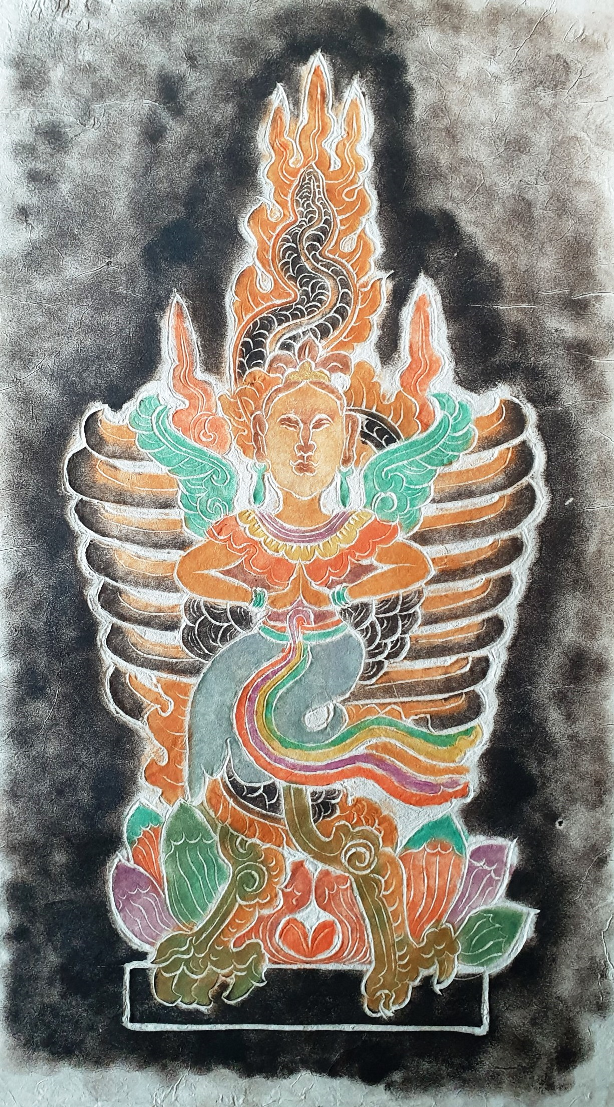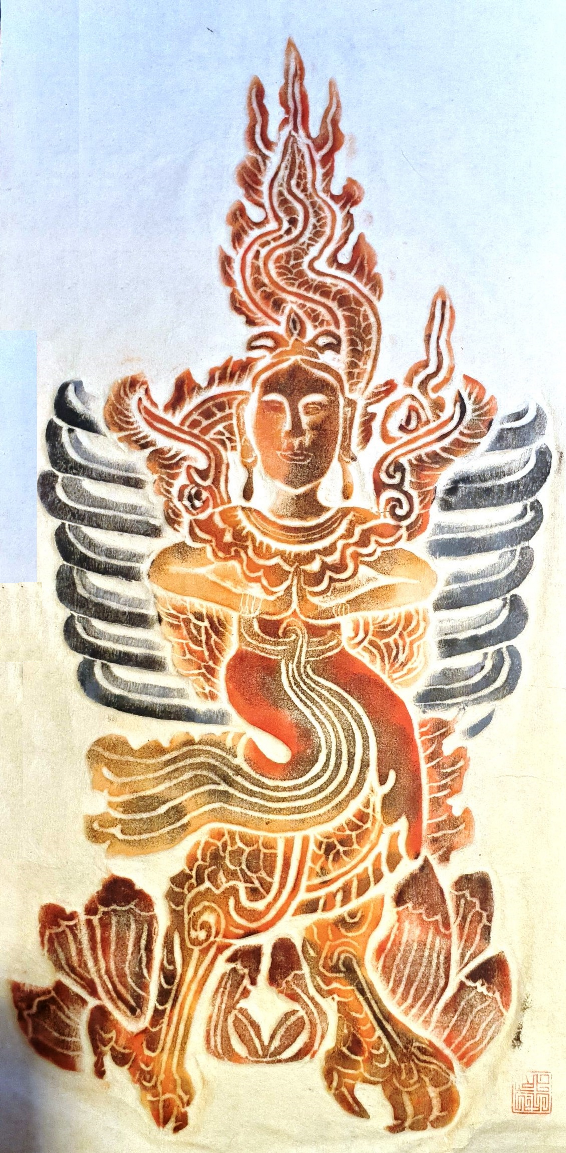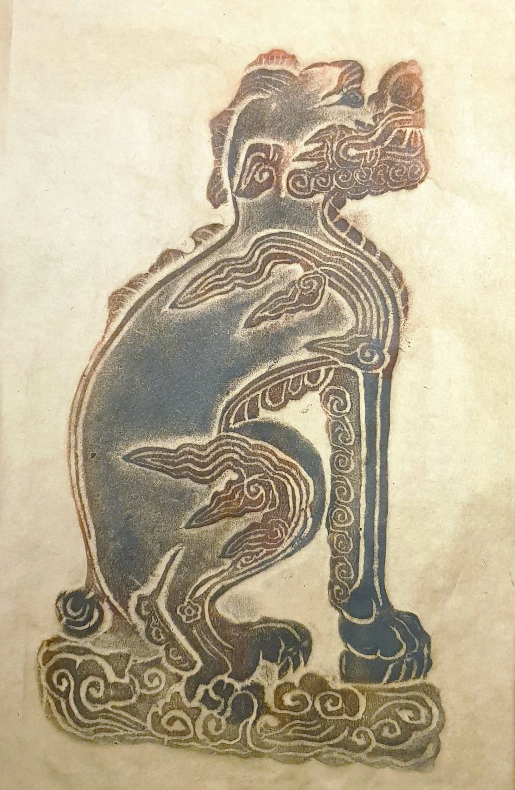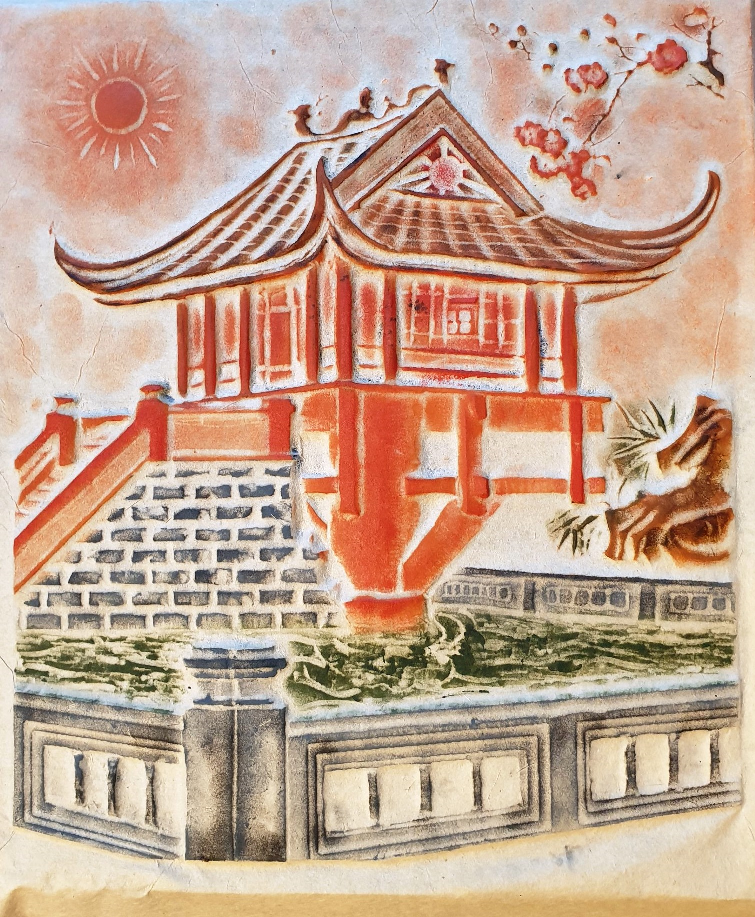ChạmArt
Giới thiệu về chạm rập mỹ thuật thủ công.
Kỹ thuật dập truyền thống là quá trình tái tạo và nhân bản văn bản và hoa văn cổ, được xử lý toàn bộ bằng tay và đã xuất hiện hơn 2000 năm với phát minh vĩ đại về giấy và vải. Giai đoạn phát triển nhất của in ấn thủ công gắn liền với hoạt động xuất bản bản đồ, kinh thánh trên các chất liệu: tre, gỗ, đá, đồng, đất nung, thủy ấn…. Bản dập được in trên giấy Gió với tỷ lệ 1:1. hiện vật gốc. Các bản đóng dấu dùng cho việc nghiên cứu và bảo tồn.
Traditional stamping technique is the process of reproducing and duplicating ancient texts and patterns, processed entirely by hand and has appeared for more than 2000 years with the great invention of paper and fabric. The most developed stage of manual printing is associated with the activities of publishing maps and bibles on materials: bamboo, wood, stone, bronze, terracotta, watermarks… The stamping is printed on Wind paper at a 1:1 ratio. original artifact. Stamped copies are used for research and preservation.
***
Một số hình ảnh :
1. Tiên Cưỡi Rồng
The fairies holding flowers and riding dragons which flank the sun, Stone carving, Keo Pagoda stele (Xuan Hong, Xuan Truong, Nam Dinh province), 1665, Revival Lê dynasty, 17 century.
The fairies holding flowers and riding dragons which flank the sun, Stone carving, Keo Pagoda stele (Xuan Hong, Xuan Truong, Nam Dinh province), 1665, Revival Lê dynasty, 17 century.


2) Nghê
Nghê is a mythical animal in Vietnamese culture, a combination of kỳ lân (or lion) and dog, often used as a mascot in front of đình, temples, pagodas, shrines in Vietnam.
Original artifact: The stone nghê at Temple of Đinh Tiên Hoàng (Hoa Lư, Ninh Bình). Revival Lê dynasty, 17th century.
Nghê is a mythical animal in Vietnamese culture, a combination of kỳ lân (or lion) and dog, often used as a mascot in front of đình, temples, pagodas, shrines in Vietnam.
Original artifact: The stone nghê at Temple of Đinh Tiên Hoàng (Hoa Lư, Ninh Bình). Revival Lê dynasty, 17th century.

3. Chùa Một Cột
The One Pillar Pagoda (Vietnamese: Chùa Một Cột; chữ Nôm: 廚榾), formally belongs to an architecture complex called Diên Hựu tự (chữ Hán: 延祐寺) which means ‘pagoda of extended blessings’. The pagoda is a historic Buddhist temple in the central Ba Đình district (near the Thăng Long Citadel), Hanoi, the capital of Vietnam. The most famous part of this architecture complex is Liên Hoa Đài (蓮花臺) means ‘the lotus pedestal’ which is a temple with special structure: a building laid on one pillar. The original pagoda was built in 1049, had some additions and was perfected in 1105. It is regarded alongside the Hương Temple, as one of Vietnam’s two most iconic temples.

Recent Posts
- Lễ ra mắt Truyện Kiều bản Tiên Điền mới. 17/11/2025
- Thử lọc bỏ các yếu tố hoang đường trong truyền thuyết về Sơn tinh-Thủy tinh 07/12/2024
- Chữ Nôm, Thái, Chăm – Application Privacy Statement 05/11/2024
- Chủ thể nhà Hạ là dân Việt cổ ? 29/08/2024
- Thần Nông, Nghiêu, Thuấn đều là dân man di ? 29/06/2024
- Nghiên cứu văn bản Nôm “Xuất gia sa di quốc âm thập giới” 15/12/2023
- Văn bản Nôm Lý Sự Dung Thông trong bộ mộc bản chùa Hòe Nhai 15/12/2023
- Phép viết sử “Truyền nghi truyền tín” nghĩa là sao ? 28/10/2023
- Thông tin đặc biệt liên quan lịch sử dân tộc 26/04/2022
- PHẢI CHĂNG LẠC CŨNG LÀ GIAO/KEO ? 19/04/2022
Tìm kiếm nâng cao:
Tìm kiếm nội dung:
| M | T | W | T | F | S | S |
|---|---|---|---|---|---|---|
| « Nov | ||||||
| 1 | 2 | 3 | 4 | 5 | 6 | 7 |
| 8 | 9 | 10 | 11 | 12 | 13 | 14 |
| 15 | 16 | 17 | 18 | 19 | 20 | 21 |
| 22 | 23 | 24 | 25 | 26 | 27 | 28 |
| 29 | 30 | 31 | ||||
Archives
- November 2025
- December 2024
- November 2024
- August 2024
- June 2024
- December 2023
- October 2023
- April 2022
- March 2022
- June 2021
- January 2020
- December 2019
- November 2019
- September 2019
- June 2018
- March 2018
- January 2018
- November 2017
- October 2017
- May 2017
- April 2017
- February 2017
- October 2016
- September 2016
- July 2016
- June 2016
- May 2016
- March 2016
- January 2016
- September 2015
- August 2015
- July 2015
- June 2015
- April 2015
- February 2015
- August 2014
- July 2014
- June 2014
- May 2014
- February 2014
- January 2014
- December 2013
- November 2013
- October 2013
- September 2013
- August 2013
- July 2013
- June 2013
- May 2013
- February 2013
- November 2012
- July 2012
- June 2012
- May 2012
- April 2012
- March 2012
- February 2012
- December 2011
- July 2011
- April 2011
- February 2011
- January 2011
- December 2010
- November 2010
Hosting support by Netnam
